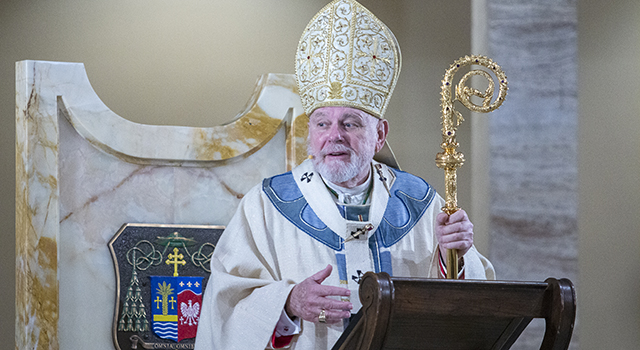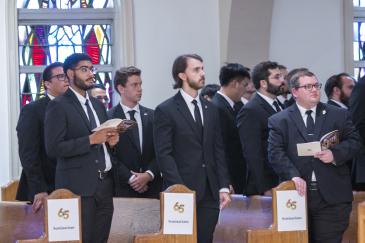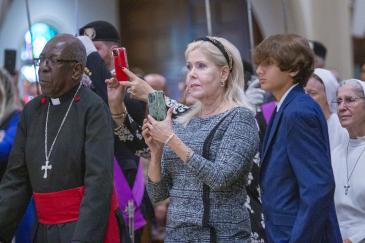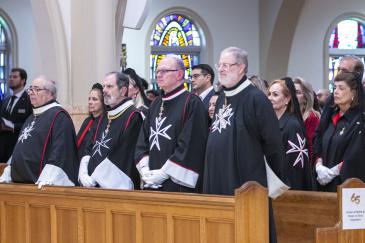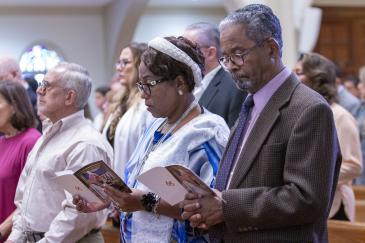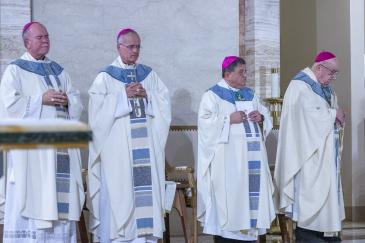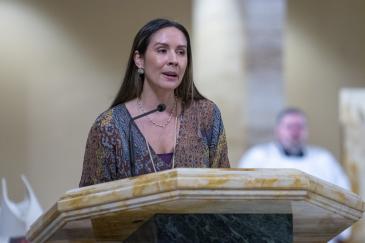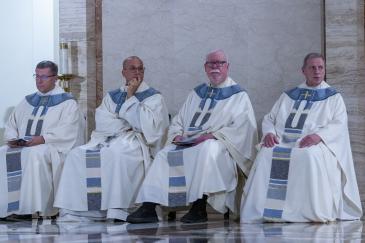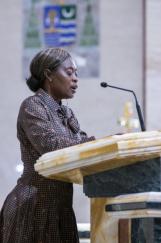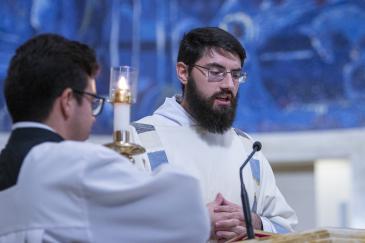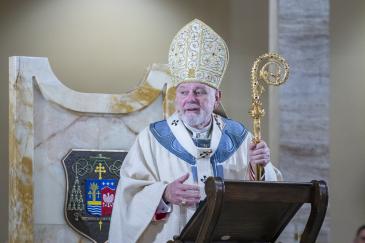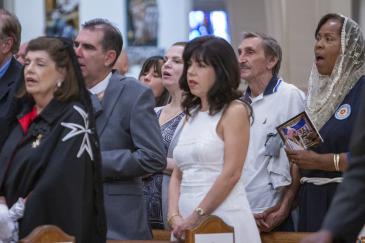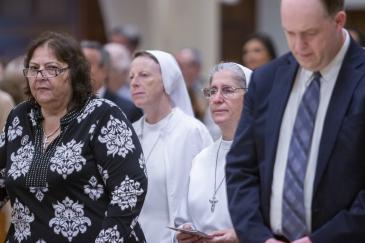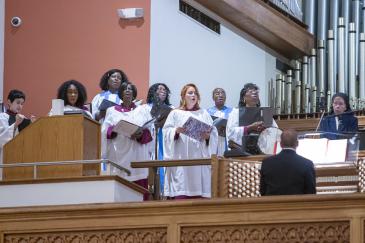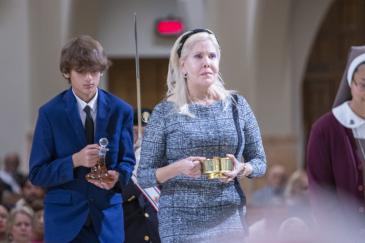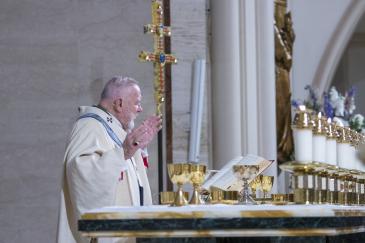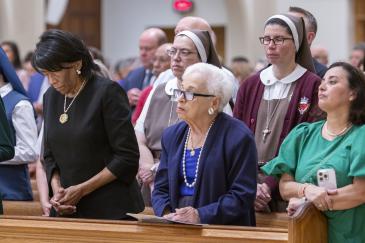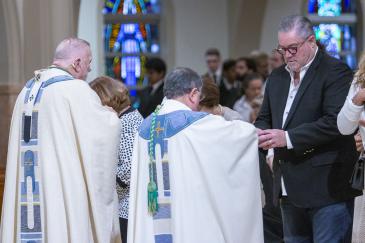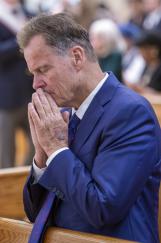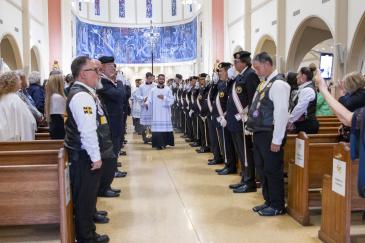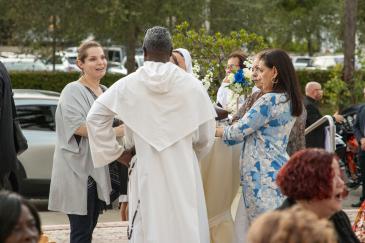By Ana Rodriguez Soto - The Archdiocese of Miami
Photography: ANA RODRIGUEZ-SOTO | FC
MIAMI | Past, present and future participants in the history of the Archdiocese of Miami gathered Oct. 7, 2023, at St. Mary Cathedral to mark its 65th anniversary.
The celebration was the first of three taking place this year. At a vespers service coming up Oct. 22, Archbishop Thomas Wenski will hand out Jubilaeum Pins to two people from each parish and archdiocesan and papal awards to a number of others; and on Nov. 11, as many as 1,000 people will dance to the tunes of Earth, Wind & Fire while raising at least $3 million for Catholic education.
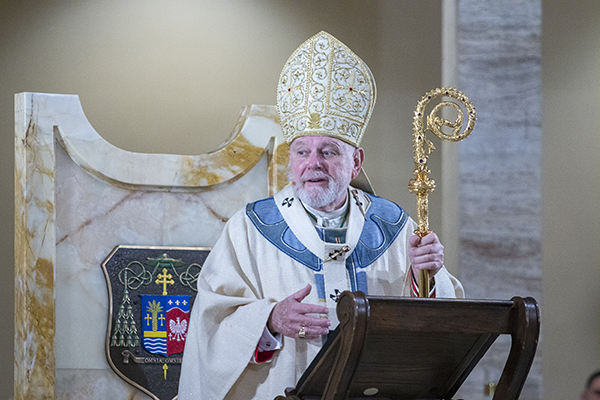
Photographer: ANA RODRIGUEZ-SOTO | FC
Archbishop Thomas Wenski preaches the homily during the Mass marking the 65th anniversary of the establishment of the Archdiocese of Miami, Oct. 7, 2023, at St. Mary Cathedral.
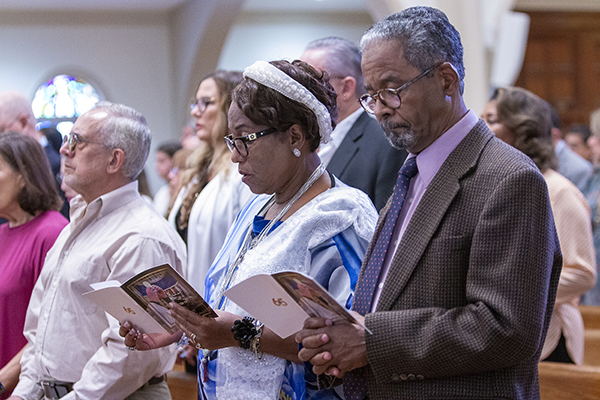
Photographer: ANA RODRIGUEZ-SOTO | FC
Archdiocesan parishioners and donors take part in the Mass marking the 65th anniversary of the establishment of the Archdiocese of Miami, Oct. 7, 2023, at St. Mary Cathedral.
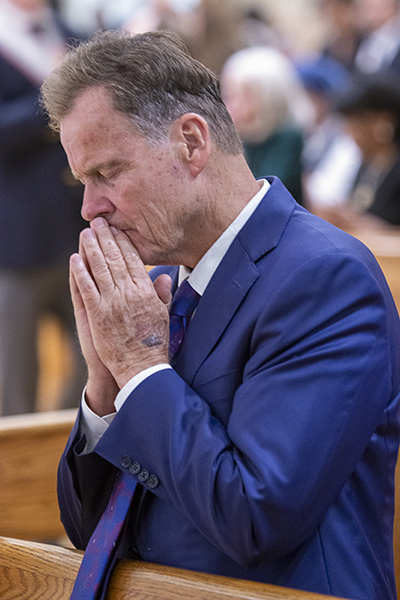
Photographer: ANA RODRIGUEZ-SOTO | FC
Tom Sheehan prays after receiving Communion during the Mass marking the 65th anniversary of the establishment of the Archdiocese of Miami, Oct. 7, 2023, at St. Mary Cathedral.
But first came the Mass, where Archbishop Wenski recalled some of the “great Church men and Church women who with great love for Jesus Christ and zeal for souls spent themselves in the service of this vineyard of the Lord which is the Archdiocese of Miami.”
He cited his deceased predecessors, founding Archbishop Coleman Carroll and second Archbishop Edward McCarthy; priests such as Bishop Agustin Roman, Msgr. Bryan O. Walsh, Msgr. Emilio Vallina and Msgr. Noel Fogarty; laity such as Athalie Range, Judge Clyde Atkins and Dr. Ben Sheppard; and religious such as Sister Lucia Ceccotti of the Marian Center and Sister Marie Schramko of Cardinal Gibbons High School – all now gone to their heavenly reward.
“So, we remember the past with gratitude. At the same time, we embrace the present with enthusiasm,” the archbishop said, noting the recent dedication of a new church at St. Agnes in Key Biscayne, the reopening of St. Malachy School in Tamarac, the opening of Cristo Rey High School in Miami, and the expansion into high school of the Basilica School of St. Mary Star of the Sea in Key West.
As for the future, “we have reason for confidence,” he said, citing the Servants of the Pierced Hearts of Jesus and Mary, a growing religious community of men and women founded here in Miami, and the 60 seminarians studying for the archdiocese in three local seminaries: St. John Vianney in Miami, Redemptoris Mater in Hialeah, and St. Vincent de Paul in Boynton Beach.
But not everything over the past 65 years has been good, the archbishop noted.
“And so we beg God’s forgiveness for those shadows, our sins of commission and omission,” while acknowledging that “God’s grace has shone more brightly than any disgrace on our part,” Archbishop Wenski said. “We express our gratitude with great humility for God always treats us better than we deserve.”
‘WITNESS TO HOPE’
He exhorted all those present to use their gifts and talents “to reach out to others all around us” and fulfill the Christian calling to be “missionary disciples.”
“In a world of fragile peace and broken promises, we must witness to hope, the hope that does not disappoint and has a human face, Jesus Christ,” he said.
Catholics do that through the various parish ministries and apostolic and ecclesial movements, he said, as well as by committing themselves “to be a reconciled and reconciling community of faith, hope and love,” who proclaim the Good News of God “through our everyday actions and example.”
Mariana O’Naghten, a Dame with the Cuban Association of the Knights of Malta who took part in the Mass, said that is precisely the mission required of South Florida’s Catholics – especially in a post-pandemic world where “nones” outnumber religious adherents and many people seem to have fallen away from the practice of the faith.
“We’re called to be missionary disciples and to evangelize those Catholics to come back home. That is, I think, the new mission of the Church,” said O’Naghten, who has lived in the Archdiocese of Miami most of her life.
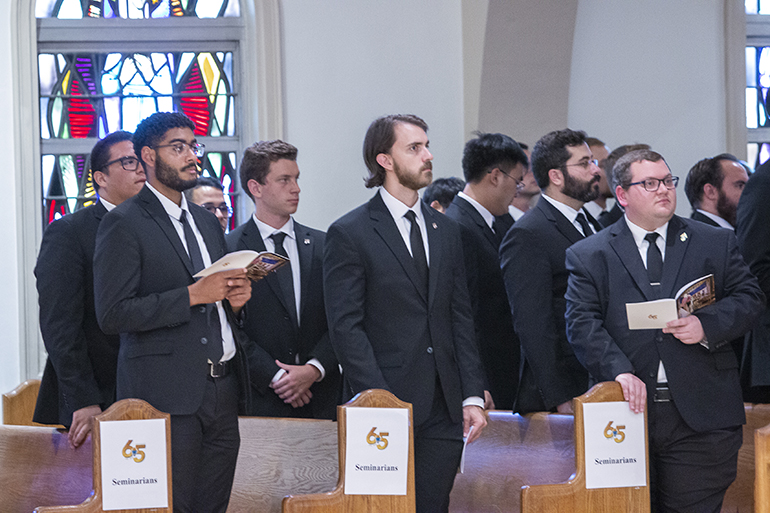
Photographer: ANA RODRIGUEZ-SOTO | FC
Archdiocesan seminarians take part in the Mass for the 65th anniversary of the establishment of the Archdiocese of Miami, Oct. 7, 2023, at St. Mary Cathedral.
By comparison, Diego Vallina is a newcomer, having lived in South Florida only 20 of his 25 years. But he is also the future Archbishop Wenski referenced: a seminarian in the newly created “propaedeutic” or preliminary stage of formation at St. John Vianney Seminary.
“I see good things [in the future] especially with the new program of the seminary,” he said. But he disagreed somewhat with being singled out as the future of the Church. “Christ is the future for sure. We’re here to bring people to him and he’s here to change their hearts,” Vallina said.
Attorney Patrick Fitzgerald is part of both the present and the past of the archdiocese. His firm provides legal representation to the Church, as his father did before him since Archbishop Carroll’s time. In fact, Fitzgerald’s first assignment, after finishing law school in 1977, was to settle the estate of Archbishop Carroll, who had died two weeks earlier.
“The archbishop said what the future is: the seminarians. The priesthood is the lifeblood of the Church,” said Fitzgerald, who is also a Knight of St. Gregory, an honor conferred by the Vatican.
‘BIG TIME’ HOPE
With the wisdom acquired over many years of work, he expressed “big time” hope for the future of the Church in Miami. “The Holy Spirit is going to proceed, is going to take care of everything. My job is not to mess it up,” Fitzgerald said.
Father Rafael Capó, vice-president of Mission at St. Thomas University, was one of the three dozen priests, along with four bishops, who concelebrated the Mass. He has worked in Miami for the past 12 years but spent a lot of that time traveling to other dioceses, both while serving as director of the U.S. bishops’ Southeast Regional Office for Hispanics – better known as SEPI, the Southeast Pastoral Institute – and more recently as a Pontifical Missionary of Mercy and National Preacher for the U.S. Eucharistic Revival.
“I see that Miami is a vibrant young church full of hope,” he said. While other dioceses seem to be shutting down or dwindling, Miami is growing.
“The Church [here] is on fire,” he said, calling it “this cradle of vibrancy” with committed young people and lots of programs, apostolic movements and ministries. “Everything is happening here.”
Much of that is due to the contributions of the many national and cultural groups who populate South Florida, he added, which is another thing the Church in Miami is doing: building bridges.
“Bridges towards Latin America, bridges toward cultures, bridges toward different realities in the Church,” Father Capó said. “The Church is called to build bridges and we are setting the example of how to do it.”
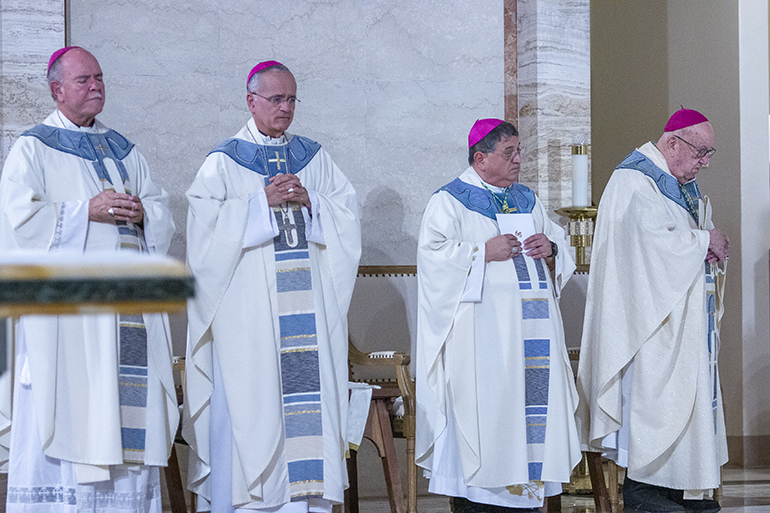
Photographer: ANA RODRIGUEZ-SOTO | FC
Bishops taking part in the Mass for the 65th anniversary of the establishment of the Archdiocese of Miami, Oct. 7, 2023, at St. Mary Cathedral, from left: Bishop Fernando Isern, emeritus of Pueblo, Colorado; Bishop Silvio Baez, auxiliary bishop of Managua, Nicaragua; Bishop Enrique Delgado, auxiliary bishop of Miami; and Archbishop John C. Favalora, Miami's third archbishop.
